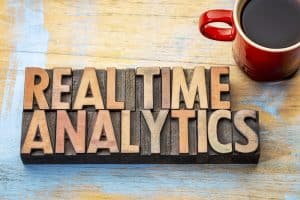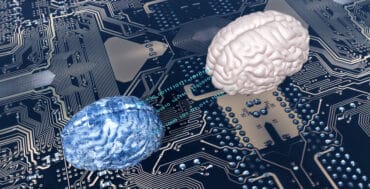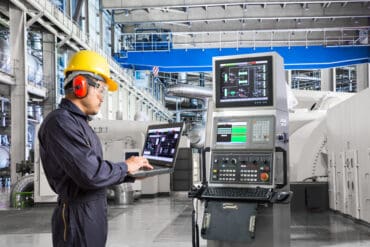
Continuous intelligence, which relies on real-time analysis of streaming events data, is being widely adopted across many industries, for many applications
Continuous intelligence (CI) enables smarter business decisions using real-time data streams and advanced analytics. Such capabilities are needed because businesses need to identify risks and opportunities in high-velocity data—opportunities that often can be detected and acted on only at a moment’s notice.
Unfortunately, flows of data from streaming sources (such as market data, the IoT, mobile devices, sensors, clickstreams, and even transactions) remain largely unnavigated. Such data must be unlocked to optimize decision making.
See also: Using CI and AI to Tackle Top Financial Services Regulatory Challenges
That situation is starting to change. CI is being more widely adopted across many industries and for many applications. The reason: There is a perfect storm of data sources and tools. Businesses have huge amounts of streaming data from IoT devices, smart sensors, and other sources that are ripe for analysis and inclusion in business processes. And the technologies (hardware, software, services, and systems) to make use of that data are now available.
The combination of lots of streaming data and solutions to derive actionable intelligence from that data means CI can deliver significant benefits to businesses of all types and sizes. A financial institution could use CI for real-time fraud prevention by detecting malicious transactions and stopping them before they are executed. An online retailer could use CI to provide an enhanced customer experience and improved service when a customer contacts a call center or moves through the product selection and purchasing process online. First responders and agencies dealing with natural disasters could use CI to deploy resources more efficiently as a dynamic situation unfolds.
CI’s impact is expected to accelerate its adoption. By 2022, more than half of major new business systems will incorporate continuous intelligence that uses real-time context data to improve decisions, according to Gartner.
CI in Action
Here are some examples of how CI is being used to deliver competitive advantages in the real world:
In retail, many use cases of CI combine streaming data such as clickstreams with detailed customer purchasing histories and preferences to deliver personalized offers. The offers are most effective when delivered in real-time, such as when a customer is visiting a website or is on a call with a sales or service representative.
An interesting application that demonstrates the power of CI in retail is that of Japanese vending machines. One machine owner employed CI to analyze weather data and information about the number of people passing a specific machine at a certain time. Using the derived insights, the vendor knew the right inventory to put in each machine. And it could develop a dynamic pricing model to sell more hot and cold beverages and soups depending on the weather and user preferences. Using CI in this manner helped the vendor get the most revenue out of its machines.
Airlines are constantly concerned about the customer experience. A common way they measure success is using the Net Promoter Score, a calculation of the proportion of passengers responding in a survey who say they are likely to recommend an airline to others. Knowing a passenger’s NPS score allows the airline to offer customized deals. Unfortunately, many passengers do not fill out a survey.
One airline is using CI that combines historical passenger data, weather data, and information on the number of open seats on different flights to help retain customers. With the analysis, the airline makes an assessment of the next best offer it can make to a customer to retain his or her business.
A trucking company whose mainstay business was the delivery of products and goods developed a new advertising model using CI. The application uses location and weather data and adds in information about the types of people who would be driving past its trucks at certain times.
With CI’s predictive analysis capabilities, the company was able to give detailed demographics and other information to sponsors who wanted to advertise on the sides of its trucks. The company generated a new revenue stream based on the data and the suggested actions from insights derived in the analysis.
Many companies use CI in industrial applications. A common application is to move from reactive maintenance to proactive maintenance using predictive analytics to help identify potential equipment failures and thus reduce downtime. Another emerging application is to use CI to optimize spare parts inventory.
Industrial facilities must balance the need for a critical part on hand when one must be replaced versus having too many parts that cost money to buy and store. Using CI, an industrial plant could, in essence, set up a just-in-time supply chain approach where parts are ordered based on the lifetime probability derived from predictive analytics of IoT data.
In manufacturing, one company that moved oil and gas throughout an expansive pipeline network collected vast amounts of sensor data to help detect leaks. The system that monitored the data was generating many false positives every day.
The company develops an AI monitoring system that combines real-time sensor data with historical data on flow rate, pressure, volume, and other pipeline metrics throughout the network. The solution cut the total number of alarms, allowing each true alarm to be analyzed faster and more comprehensively, and the actual leaks addressed sooner.
Conclusion
CI applications deliver business value by considering the current state of affairs and analyzing events in real-time. Analyzing event data on the fly provides situational awareness upon which fast decisions can be made.
Basing a decision on the most current state requires analyzing the event data continuously as it streams in. Further value can be gained by analyzing the same data when it is stored to spot trends and identify the root causes of different occurrences.







